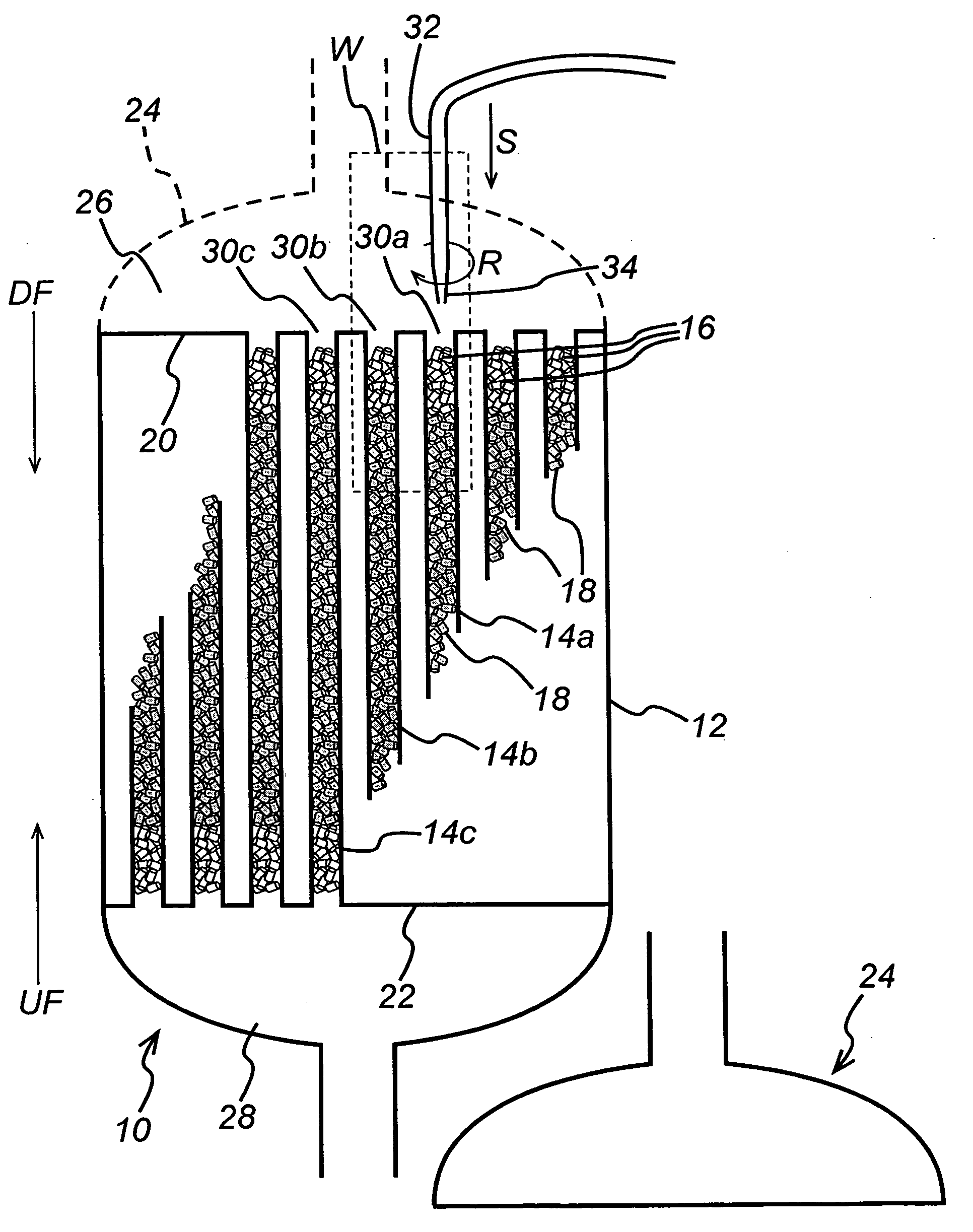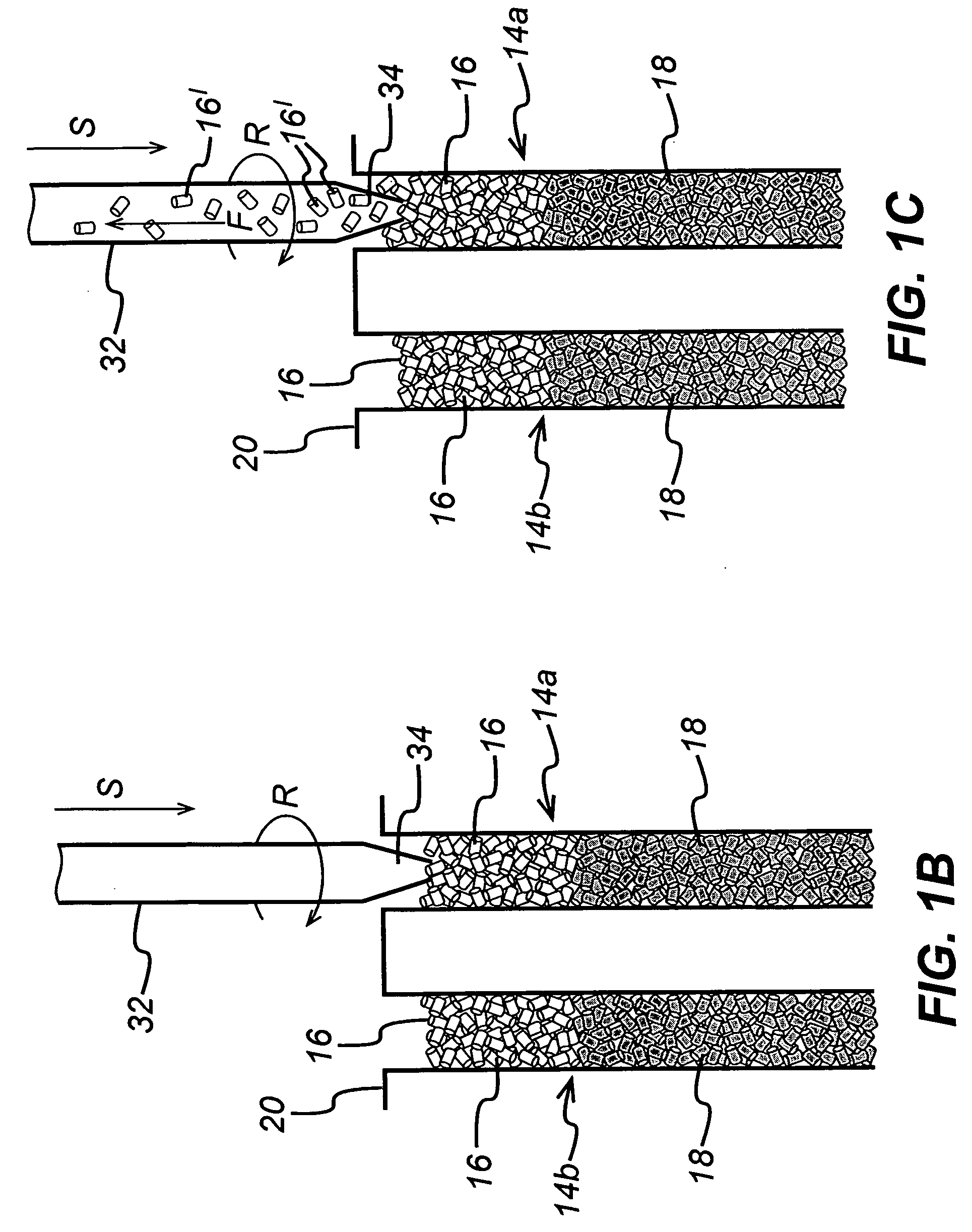Apparatus and method for dislodging and extracting solid materials from tubes
a technology of apparatus and tubes, applied in the field of apparatus and methods for dislodging and extracting solid materials from tubes, can solve the problems of economic feasibility of continuing to use catalyst materials, loss of production time, and progressive decrease in product yield, so as to ensure the structural suitability of the tubes, and minimize damage to at least a portion
- Summary
- Abstract
- Description
- Claims
- Application Information
AI Technical Summary
Benefits of technology
Problems solved by technology
Method used
Image
Examples
Embodiment Construction
[0051]The method and apparatus of the present invention minimizes damage to solid materials, during dislodging and extraction of at least a portion of them from tubular members, such as the reactor tubes of shell-and-tube reactors, so that at least a portion of the extracted solid materials remain structurally suitable for re-use. The present invention also provides a method which facilitates monitoring and communicating the status of each tube during dislodging, removing, and replacing at least a portion of solid materials from reactor tubes.
[0052]The following definitions are provided to facilitate description of the present invention and clarify the terminology used hereinafter.
[0053]As used herein, the term “C2 to C5 alkane” means a straight chain or branched chain alkane, having from 2 to 5 carbons atoms per alkane molecule, for example, ethane, propane, butane and pentane. The term “C2 to C5 alkene” means a straight chain or branched chain alkene having from 2 to 5 carbons ato...
PUM
 Login to View More
Login to View More Abstract
Description
Claims
Application Information
 Login to View More
Login to View More - R&D
- Intellectual Property
- Life Sciences
- Materials
- Tech Scout
- Unparalleled Data Quality
- Higher Quality Content
- 60% Fewer Hallucinations
Browse by: Latest US Patents, China's latest patents, Technical Efficacy Thesaurus, Application Domain, Technology Topic, Popular Technical Reports.
© 2025 PatSnap. All rights reserved.Legal|Privacy policy|Modern Slavery Act Transparency Statement|Sitemap|About US| Contact US: help@patsnap.com



